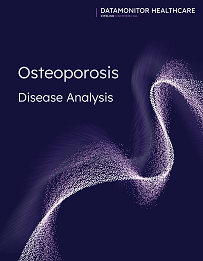Report Library
All Reports
Datamonitor Healthcare CV&Met Disease Analysis: Osteoporosis
October 08, 2024
While first-line bisphosphonates are generically available, and biosimilars/synthetic peptide generics to the first anabolic therapy Forteo (teriparatide) started to be introduced in 2019, the branded osteoporosis market has continued to grow, driven by Amgen’s market-leading Prolia (denosumab) and to a lesser degree by novel anabolics with efficacy and convenience advantages over Forteo. Prolia has continued to be an important growth driver, despite being first approved back in 2010. While the drug works by reducing bone resorption like the bisphosphonates, Prolia has some evidence for stronger increases in bone mineral density (BMD), though there are divided opinions about using it at first line due to a more rapid drop in BMD and increased risk of vertebral fractures after discontinuation, requiring indefinite treatment or switching to an alternative. Amgen has reported real-world data supporting reduced fracture risk and also promotes its dosing, which involves an injection every six months by a provider.
The American Society for Bone and Mineral Research (ASBMR) announced in November 2023 that the SABRE (Strategy to Advance BMD as a Regulatory Endpoint) project team had submitted a full qualification plan to the FDA to use treatment-related change in BMD as a surrogate endpoint for fractures in future trials of new anti-osteoporosis drugs. In March 2024, the FDA communicated that a ruling for this plan would be provided within 10 months. Historically, the FDA and EMA have required registrational studies to have fracture as the primary endpoint. If accepted, the new BMD endpoint could mitigate development risk and expedite the drug development process in this disease area.
| Indications Covered: | Osteoporosis / Osteopenia |
